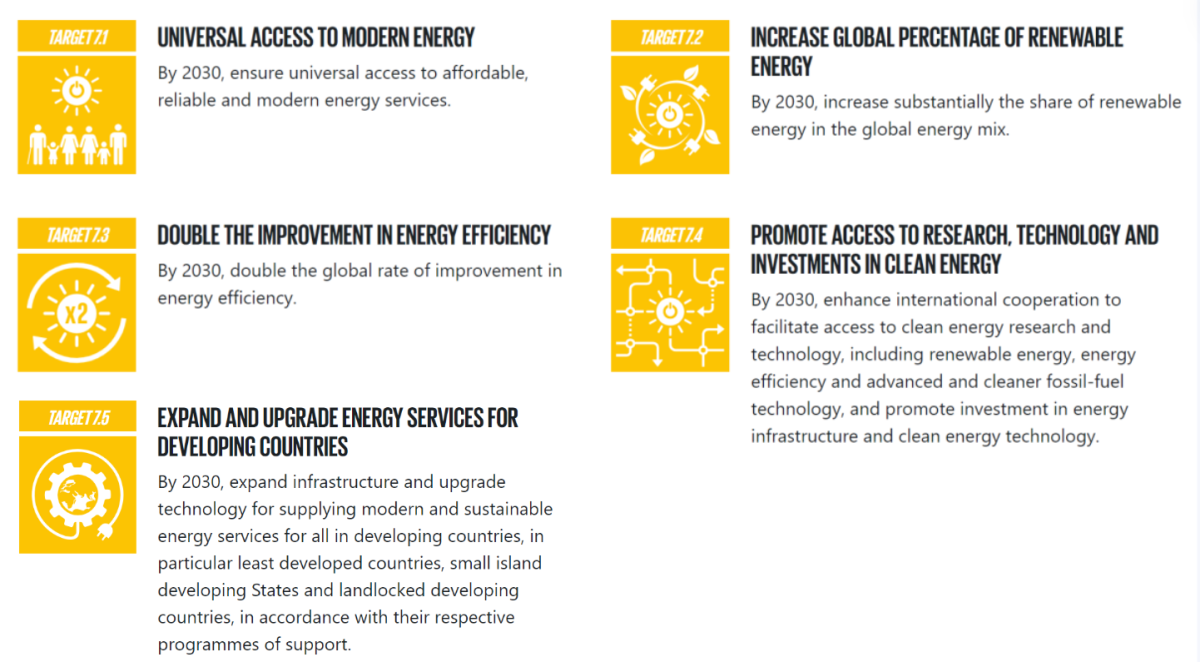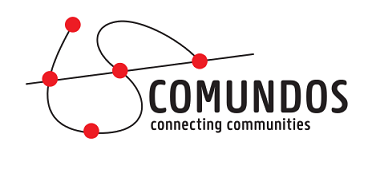SDG07 in the classroom: Affordable and clean energy
“Ensure access to affordable, reliable, sustainable and modern energy”
At the end of this lesson, the students will be able to:
- Understand the role of energy

- Understand the importance of renewable sources and energies
- Understand the concept of “energy poverty” and its consequences
- Understand the importance of access to affordable, reliable and modern energy services
- Analyze digital story and select one to explain the message and importance of renewable energies in rural areas
- Analyze a chart about access to affordable, reliable and modern energy services
Goal 7 is about ensuring access to clean and affordable energy, which is key to the development of agriculture, business, communications, education, healthcare and transportation.
The world continues to advance towards sustainable energy targets – but not fast enough. At the current pace, about 660 million people will still lack access to electricity and close to 2 billion people will still rely on polluting fuels and technologies for cooking by 2030.
Watch the video and read the targets of SDG7. Then, brainstorm through the following questions.

- What do we need energy for?
- What energy source is used to heat your house, water, cook food, make light?
- Target 7.2 aims to: "by 2030, increase substantially the share of renewable energy in the global energy mix". What are "renewable energies"?
- Why is it important that we get our energy from renewable sources (sun, wind, water) and not from fossil fuels?
- Are renewable energies as affordable as non-renewable energies?
- Do you use renewable energies at home or in school?
- Renewable energies are essential to the sustainability of our planet. However, energy consumption should be reduced. What are good practices you can do in your daily life to reduce energy consumption (i.e. Turn off the lights when you don’t need them, use LED lights, etc.)?
- How would your daily routine look like/change if you didn’t have energy (electricity, heating, air conditioning) for a day?
- What does the concept of "energy poverty" refers to?
- How would energy poverty compromise your education, hygiene and food storage among others?
- Target 7.1 aims to "by 2030, ensure universal access to affordable, reliable and modern energy services". Have you got reliable and modern energy services such as electrical cooking stoves or water heating in your home?
- What are the consequences of cooking with coal, charcoal on humans' health?
Possible adaptations: (Online) This activity can be done with the use of online tools such as Jamboard, Miro or Mentimeter.
Material to link to Activity 1.
- Renewable energy explained in 2.5 minutes reflects on the importance of consumption and renewable energy.
- SDG 7: AFFORDABLE AND CLEAN ENERGY explains little actions you can take in your daily life which help achieve SDG7.
- Why it Matters (UN)
Students watch the following videos. Afterwards, they pick one video and explain:
- The message the author wants to convey
- How (renewable) energy can contribute to the development and sustainability of rural areas worldwide
Video 1: Solar energy, a source of light
Video 2: Lack of electricity in the Family Farm School in Natete, Mozambique
Video 3: Untimely power cuts in the city of Lubumbashi
Possible adaptations: It is suggested to do this activity individually. Otherwise, ask students to choose a story and pair those that picked the same video. The questions can be discussed and answered together.
You can also select other digital stories of Comundos related to SDG7
Ask students to do some research to find out which electricity providers have been used at home. Make them write a post-it (anonymous) with the name of the electricity provider and insert it into a box. Each student randomly picks one post-it a time and together finds out how sustainable it is, according to the GreenPeace website shows the renewable energy score for electricity providers in Belgium).
(This is a very delicate activity as other factors like affordability should be taken into account. The goal is not to compare each other's electricity providers but to raise awareness about sustainability. Therefore, the results should be kept anonymous).
Possible adaptation: the same activity as one-group activity can be done by finding out which electricity providers have been used in school. In this case, the results should be discussed by following the guidelines in the Greenpeace website. How sustainable? What solutions can be found to reduce energy consumption in school?
This quiz is about UN Goal 7: Affordable and Clean Energy. You can either use it at the end of your lesson to revise the topics you talked about or at the beginning of the lesson to challenge students prior knowledge and gain their attention.

For SDG7 (Affordable and clean energy) sheet, our favourite pedagogical twist is:
Foster peer teaching: you can engage "expert" students in teaching peers on a defined subject (e.g.; a student who has done a private course into energy studies can help students understand specific or more complex topics, etc.)
If you have another pedagogical twist in mind, feel free to apply or check the pedagogical twist list.
- Infographic (UN)
- An eco-friendly project that harness energy from rivers and canals with a low height difference.
- Possible activity: What is this image showing? What do the different colours in different countries show? Explain the numbers.

Share of the population with access to clean cooking systems, 2019 (percentage)

A gift for Comundos
Over the years, Comundos has helped remote communities around the world by teaching critical thinking, media literacy and the use of communication technology.
To do this effectively, we need your support for computers, translations, courses and social media management.
Thank you .
BE11 1030 2973 8248




